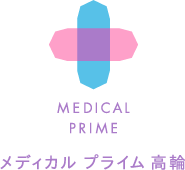Causes and cures for adult heat rash
2021.09.01
As the hot days continue, many people may be suffering from heat rash.
Heat rash is often thought of as a child’s condition, but there are many adults who also have it.
First, what kind of condition is it, how does one cure it, and what is the difference between sweat rash and atopic dermatitis?
What heat rash is
Miliaria is officially called “miliaria” and is a condition that causes inflammation when the sweat gland (eccrine sweat gland) is blocked for some reason and the sweat cannot escape.
If you leave it as it is after sweating a lot, the salt contained in the sweat will remain on the skin.
Skin that is sticky with sweat will easily get dirty, the sweat duct will become blocked, and it will easily result in heat rash.
There are 3 types of heat rash
There are three types of heat rash: “crystal-like heat rash” (miliaria crystallina), “red heat
rash” (miliaria rubra), and “deep heat rash.”
“Crystal-like heat rash” is a heat rash that occurs on the shallow part of the skin and is a condition in which many small transparent or whitish blisters are formed.
There is no itch. Also called “white heat rash”.
“Red heat rash” (miliaria rubra) is a condition in which a lot of small red lumps are formed.
This is probably the kind of rash that comes to mind when you hear the term “heat rash”. It is also known as “prickly heat”.
“Deep heat rash” is a heat rash caused by a clogged sweat duct deep in the skin. A small, raised rash will form on the surface of the skin, and that area will not sweat.
Therefore, if a deep heat rash develops in a wide area, it is easy to develop heat stroke.
Difference between “heat rash” and “sweat rash”
“Sweat rash” is similar to heat rash.
Both are the same in terms of skin problems that occur when you sweat, but the causes are different.
Sweat rash is contact dermatitis caused by sweat.
The main component of sweat is water, but it also contains a very small amount of salt and ammonia.
Sweat rash (contact dermatitis due to sweat) occurs when these ingredients irritate the skin and cause the skin to become rough or inflamed.
Sweat rashes are more likely to occur when the barrier function of the skin is weakened.
Difference between “heat rash” and “atopic dermatitis”
Atopic dermatitis is a condition in which the barrier function of the skin is reduced and itchy eczema repeatedly improves and worsens.
When I went to a dermatologist thinking that my heat rash had worsened, I was told that I had atopic dermatitis.
The three basic treatments for atopic dermatitis are to suppress inflammation and itching with drugs, to enhance the barrier function of the skin with skin care (moisturizing and cleansing), and to remove as much as possible the factors that worsen the symptoms.
Sweat is also known as one of the factors that worsen atopy, but sweating itself has its advantages.
Care after sweating is more important than intense sweating.
If you leave the sweat as it is, itching may become worse due to the irritation from it, so wipe it off as often as possible and, if there is one available, wash it off in a shower or change your clothes.
How to cure heat rash
Of the three types of heat rash, crystal-like heat rash and red heat rash are often cured by self-care.
The important part of self-care is to keep your skin clean. Specifically, keep the following in mind.
・ Use air conditioning to avoid sweating too much
・ Wear breathable clothes that readily absorb sweat and dry easily
・ Change clothes if you sweat
・ Wipe sweat diligently with a towel, handkerchief, sweat wipe sheet, etc.
・ If there is a washroom available, wash sweat away by bathing or showering
・ If you have an itch, cool it with an ice pack or a chilled towel.
These are not only for when you have a heat rash, but also to prevent heat rash.
It is also important as self-care for sweat rash and atopic dermatitis as well as heat rash.
What is the guideline for seeing a dermatologist?
Heat rash often heals naturally by keeping the skin clean.
However, in the case of heat rash with itching, if you can’t stand it and scratch it, the skin may become infected with bacteria and the rash will worsen.
If you can’t get rid of the itching, if itching lasts for a long time, or if self-care doesn’t improve your symptoms, see a dermatologist.
Also, if you feel worse with over-the-counter medications or your symptoms do not improve, we recommend that you visit us early.
The Shimoda Skin Clinic (http://shimoda-hifuka.jp/) on the 4th floor of Medical Prime Takanawa handles skin problems and skin conditions from small children to the elderly.
Please feel free to contact us.
Medical Prime Shinkawa 4th floor Tokyo Hatchobori Dermatology / Plastic Surgery (https://tokyo-h-hihuka.com/) deals with skin problems and skin conditions from small children to adults.
Please feel free to contact us.
At Kanda Suzuki Dermatology (https://kajichoskin.com/) on the 5th floor of Medical Prime Kanda, we value not only relief of symptoms but also treatment aimed at preventing recurrence by pursuing the root cause. If you have skin problems or worries, please feel free to contact us.

